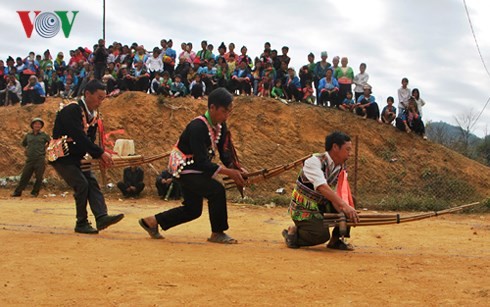 Mong men play Khen panpipes Mong men play Khen panpipes
|
The Khen is always played at Mong festivals and New Year celebrations. It expresses love, community, and nature, and contacts the world of the dead. Young Mong men play the Khen and dance to show off their strength, sensibility, and skill. They learn to play the Khen when they are small. 13-year-old boys carry a Khen to the terraced fields or market fairs to play whenever they feel happy or sad. Vu A Ky, a Mong man living in Tua Chua, Dien Bien province, says: “Mong men always bring a Khen to festivals and rituals such as a funeral ceremony. It helps them express what they can’t say.”
At festivals the sound of the Khen echoes over the mountains and forests. Mong men who play the Khen and dance exceptionally well are honored by the villagers. At funeral ceremonies, the Khen, on behalf of the living, talks to departed souls. At a wedding party, the Khen conveys the parents’ messages to their daughter.
It’s not easy to make an authentic Mong Khen. It’s a family craft and the father teaches his sons how to make a Khen. Giang A Khay has 3 brothers but only he has learned to make Khens. “When I was small, I watched my father making Khens. I liked it and learned the craft. I also picked up tips from other artisans. Then I learned to play the Khen and dance to it. I hope more young people will learn to make Khens to keep the craft alive.”
Giang A Khay said that to make a good Khen, they use a Hinoki wood log for the sound box. 6 bamboo tubes of different lengths and diameters are inserted into the sound box.
Despite societal changes, the Mong have preserved the Khen as the soul of their culture. Many Mong men continue to make Khen and transfer the techniques of making and performing Khen to younger people.